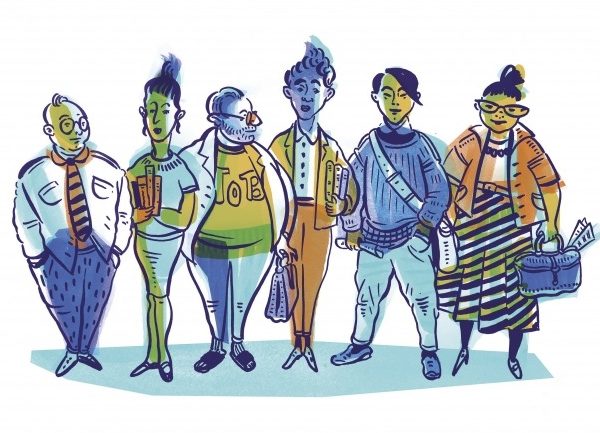
Shahidha Bari has a nice article in The Chronicle of Higher Education about how to dress for academia. There’s a long held idea that a “life of the mind” stands above material interests – fashion is trivial and vain, best left alone if you’re serious about your study.
Yet, teaching demands a certain level of respectability, and few can get away with wearing whatever they want. Both professors and teaching assistants alike have to be mindful of what they wear. And just like how business casual has made dress a much more difficult territory to navigate in business offices, the disappearance of tailored jackets on college campuses have left many people wondering how they’re supposed to dress for classrooms. An excerpt:
Whenever I catch a glimpse of my reflection during late-night lecture writing or midway through a mountain of marking, I recall, with dismay, a line from Jonathan Swift: “She wears her clothes as if they were thrown on her with a pitchfork.” Academics can be a motley crew, coffee-stained and ink-blotted, so dedicated to ideas we can barely spare a thought for what we wear. But this dismissal of dress seems to me so often only an artful pose, implying that to care about clothes is to have fallen victim to vanity when you ought instead to have been immersed in abstract intellectual inquiry.
The way that we dress in the academy has changed because the academy has changed. Learned professors once inspired confidence with their tweed jackets and elbow-patched blazers, understandably unbothered by fleeting fashions when the longue durée of tenure stretched so happily ahead of them. A few hard-wearing separates, well-made and durable, in a muted palette, could make for a perfectly passable and desperately dull uniform, worn on rotation, week by week.
By contrast, the harried teaching assistants of today’s university, underpaid and overworked, have neither time nor income to spare on sartorial matters. Somehow they must seamlessly segue from graduate students slumming in sneakers to professorial formality. A blazer thrown over a Ramones T-shirt might do the trick, or you could try fishing out that pair of respectably stout court shoes you bought for the wedding you went to last summer.
[…]
Yet not all of us can wear what we like. Behind our workplace wardrobes lies the nexus of inequalities that structure the university. Dress bears upon our relationships with students and staff. The female professor who looks younger than her years knows this; she thinks hard about how to connote her age and command the respect her learning deserves. So too does the recently graduated teaching assistant who wants not to be mistaken for a student any longer, but to be seen by colleagues as an equal in the competitive job market. “Dress for the job you want,” goes the mystifying mantra. The irony is that this should mean so little in an industry marked by a paucity of any jobs at all.
Every once in a while, I’ll get an email from a reader asking what they should wear if they’re in academia. There isn’t an easy answer. A lot depends on your university, department, and frankly position. Dressing for academia today is just as complicated as dressing for any field.
One important sub-point in Bari’s article: it’s a lot easier for some people to ignore dress codes. Older, white, male professors in the hard sciences have an easier time showing up to department meetings in t-shirts and chinos. Professors who are are women or ethnic minorities, however, often have to think about what kind of messages their clothes send. Sometimes dressing “professionally,” even if others are dressing casually, is a way to help even the playing field.
You can read the rest of Bari’s article here.








